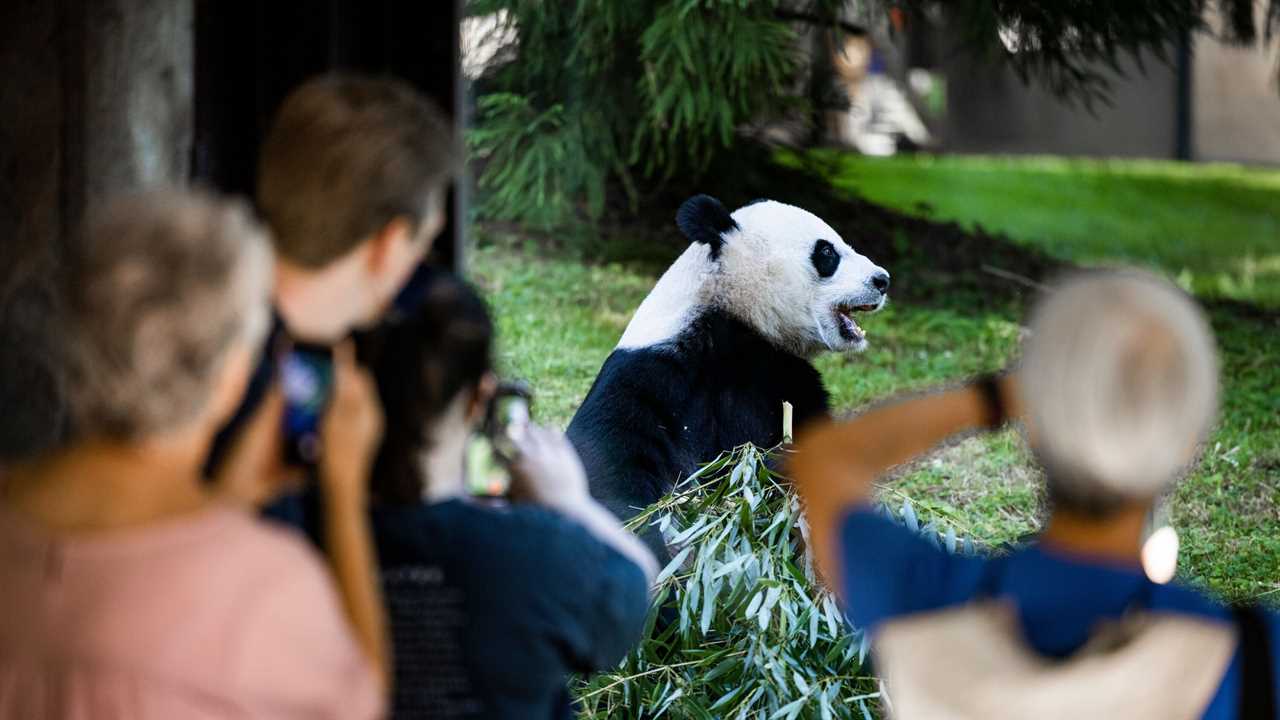
Fifty years ago this month, Chairman Mao made President Richard M. Nixon a promise: He would send two giant pandas to the United States.
Mao made this proclamation in February 1972, when Nixon visited China to begin a historic rapprochement. The announcement stirred up what The New York Times described at the time as “polite warfare” among American zoos angling to host the pandas, and ushered in a half-century of so-called panda diplomacy between China and the United States.
But now, a member of Congress from Nixon’s party is questioning whether panda diplomacy needs to change, and is aiming to send a message to China while it hosts the Olympic Games.
Panda diplomacy, in its current form, works like this: China loans pandas to a zoo in the United States or another country, and the zoo pays an annual fee — usually $500,000 to $1 million each — to keep the pandas for at least a few years. The animals serve as good-will ambassadors for China while, experts said, softening the country’s authoritarian image and drawing attention away from its record of human rights abuses.
“It’s soft power,” said Andrew J. Nathan, a political science professor at Columbia who specializes in Chinese politics and foreign policy.
“Pandas are very cute and lovable,” he said, “so it fits into that kind of friendship diplomacy image.”
But now, a bill in Congress is taking aim at this longstanding arrangement — specifically, the stipulation that panda cubs born abroad must be shipped to China within a few years.
“We do need to think outside of the box in terms of dealing with their aggression,” Representative Nancy Mace, Republican of South Carolina, said in an interview, referring to the Chinese government.
The legislation faces a narrow path in the House, which is controlled by Democrats, and it was not clear how much of an effect it might have given that China arranges panda loans directly with zoos and not with the U.S. government.
Ms. Mace, who sponsored the bill, said she hoped it would send a message to China during the Winter Games in Beijing that “some of their aggression is not OK,” and that pandas should not be used as window dressing.
The bill cites China’s threats against Taiwan, its suppression of dissent in Hong Kong and its “crimes against humanity” against the Uyghurs, a Muslim ethnic minority, in the northwestern Xinjiang region. President Biden has called the government’s actions in Xinjiang a genocide, as did the Trump administration, citing the use of internment camps and forced sterilization.
The Chinese Embassy responded to a request for comment by referring to a statement that the National Zoo & Conservation Biology Institute, which is part of the Smithsonian, gave to The Post and Courier of Charleston, S.C. “We have nothing but success with our giant panda program,” a zoo spokeswoman said.
The National Zoo is one of three zoos in the United States that have pandas; the others are Zoo Atlanta and the Memphis Zoo. Representatives for the zoos declined to comment.
China updated its panda protocols in 1984 to stipulate that pandas would be offered on 10-year loans, not in perpetuity, as with Ling-Ling and Hsing-Hsing, the pandas China sent to the National Zoo in April 1972. (Nixon reciprocated by sending China a pair of musk oxen.)
Understand U.S.-China Relations
A tense era in U.S.-China ties. The two powers are profoundly at odds as they jockey for influence beyond their own shores, compete in technology and maneuver for military advantages. Here’s what to know about the main fronts in U.S.-China relations:
When a panda cub is born in the United States, a zoo must pay China a one-time fee of $400,000. Most of the pandas are sent to China within a few years, although the age at which that happens varies by contract. Three pandas born in the United States remain in American zoos: Xiao Qi Ji, who was born at the National Zoo in 2020, and Ya Lun and Xi Lun, twins who were born at Zoo Atlanta in 2016.
In part because of the central role they play in U.S.-China geopolitics, pandas have benefited from quality medical care and breeding and research efforts at facilities around the world. American zoos have, in turn, benefited from the increased foot traffic and revenue that pandas generate, helping to offset the cost of acquiring and keeping the animals.
In 2016, the giant panda was removed from the endangered list and upgraded to “vulnerable” status by the International Union for Conservation of Nature. As the panda’s survival outlook has improved, experts said, China’s approach to panda diplomacy has shifted, with the animals coming to serve as more of a shield for China’s human rights abuses and a tool to project soft power.
Susan Shirk, the chair of the 21st Century China Center at the University of California, San Diego, said that if Ms. Mace’s bill passed, it could hurt a “mutually beneficial” collaboration among panda conservationists around the world.
“The raising of pandas should be done on the basis of science,” she said, “rather than using it as some kind of leverage.”
Dan Ashe, the president and chief executive of the Association of Zoos and Aquariums, said that his organization did not support Ms. Mace’s bill.
“This legislation would risk ending a longstanding program that has contributed to the conservation of wild pandas,” he said in a statement on Monday.
The San Diego Zoo had pandas from 1996 to 2019, when its contract with China ended. Donald Lindburg, the zoo’s former director of giant panda research, said the enduring appeal of the animals, for both the zoo and its visitors, was simple.
“They were very popular and many, many people came to see them” he said. “They’re beautiful.”






